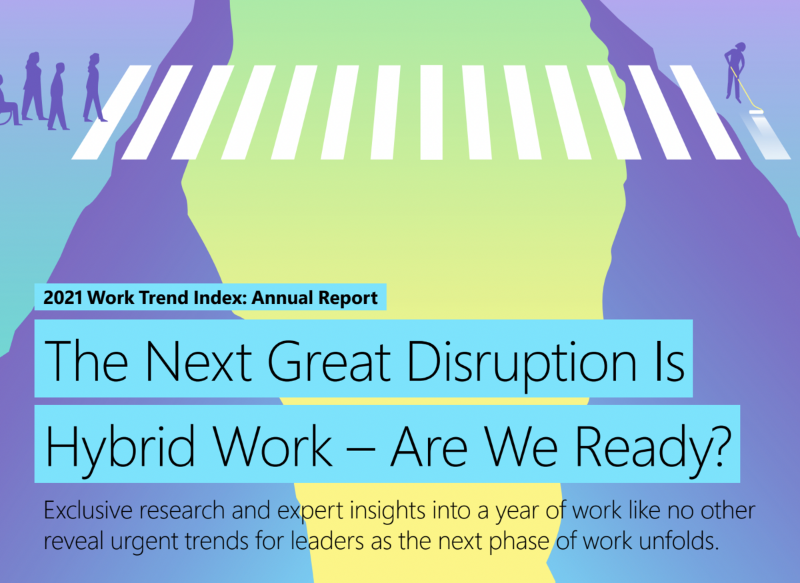The Next Great Disruption Is Hybrid Work
Published on 20 Jul 2022

The year 2020 irrevocably altered the nature of labor, affecting every individual and organization on the planet. Now that mass vaccination is on the horizon, we're on the verge of a disruption as significant as last year's rapid shift to remote work: the transition to hybrid, a model in which some workers return to the office. In contrast, others continue to work from home. Flexible employment is here to stay, and the talent marketplace has undergone a fundamental transformation.
Remote work has given individuals new employment prospects, more time with their families, and commuting alternatives. However, additional obstacles are ahead. Teams have grown more compartmentalized, and digital fatigue is a real and unsustainable issue.
Now is the time to use everything we've learned over the previous year to establish a workplace where everyone can flourish. In light of the fact that more than 40 percent of the global workforce is contemplating quitting their company this year, executives who want to recruit and retain diverse talent must adopt a strategic approach to hybrid work.
The 2021 Work Trend Index summarizes results from a survey of over 30,000 individuals in 31 countries and assessments of billions of productivity and labor signals across Microsoft 365 and LinkedIn to aid employers through the transition. It also contains viewpoints from specialists who have spent decades researching workplace cooperation, social capital, and space design.
Explore the trends that will define the future of work and how the last year altered the way we work.
Hybrid work trends that every company leader must understand
Flexible employment will continue to exist.
Workers want the best of both worlds: 73% of employees questioned want the continuation of flexible remote work alternatives, but 67% desire more face-to-face interaction with their colleagues. 66% of corporate decision-makers are contemplating revamping their physical workplaces to support hybrid work arrangements.
The facts are clear. Extreme flexibility and hybrid work will characterize the workplace post-pandemic. Employees want control over where, when, and how they work and expect employers to provide alternatives. The choices that company leaders make in the next months to allow flexible work will have an influence on culture, creativity, and the ability of their businesses to recruit and retain top personnel.
High output conceals a weary crew.
Many workers' self-assessed productivity has stayed the same or increased over the previous year but at a human cost. Nearly one in five respondents to a worldwide study said their company does not care about work-life balance. 54% of respondents feel overworked. 39 percent report feeling fatigued. And Microsoft 365's billions of productivity signals precisely measure the digital weariness of employees.
Generation Z is vulnerable and will need revitalization.
Currently, a neglected population looks to be suffering: Generation Z. Sixty percent of this group - those between the ages of 18 and 25 - report barely living or fighting to make ends meet.
This generation is more likely to be unmarried and in the early stages of their careers, making them more susceptible to isolation, struggle with motivation at work, and lack the financial resources to build suitable workspaces at home. Compared to earlier generations, survey respondents were more likely to struggle with work-life balance (+8 percentage points) and to feel weary after a standard workday (+8 percentage points).
Compared to earlier generations, Gen Z had greater trouble feeling involved or enthusiastic about work, speaking out during meetings, and contributing new ideas.
Download Microsoft's whitepaper to learn more about The Next Great Disruption Is Hybrid Work only on Whitepapers Online.
